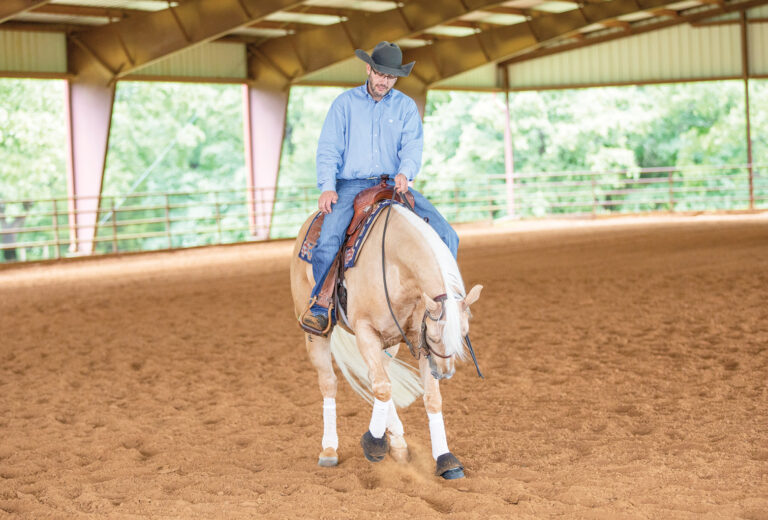
1. A ‘flying change’ refers to a change of:
A) riders in a gymkhana class.
B) leads at the lope or gallop.
C) direction during pole-bending.
2. True or false: At the lope, the legs toward the outside of the circle should be leading.
T / F
3. When asking your horse to pick up a lope, you should
A) remain upright.
B) lean forward.
C) lean to the side.
4. Which cues are most typical?
A) ‘kiss’ for trot and ‘cluck’ for lope
B) ‘cluck’ for trot and ‘kiss’ for lope
C) ‘cluck’ for slow and ‘kiss’ for stop
HOW’D YOU DO? (Answers below.)
1. B is correct. At a lope or gallop, a flying change is when your horse changes leads during the moment of suspension. A simple change is when you bring your horse back down to a trot, then cue him to pick up the lope again, but on the other lead.
2. F is correct. At the lope, the foreleg and hindleg on the inside of the circle should be leading.
3. A is correct. You should sit quietly and upright in the saddle—no leaning—when you ask your horse to pick up the lope.
4. B is correct. Your horse will respond to whatever cues you teach him, but standard for most trainers is cluck for a trot and kiss for a lope.
Hey! Not already receiving H&R’s fun and informative The Ride newsletter? Sign up right here .
And for tips on loping your horse with confidence—click here.






